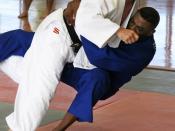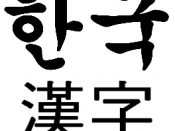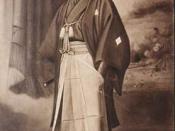The history of Hapkido does not reach very far back in time, although it does have links with Korea's Buldo moo sool (Buddhist martial arts). The modern resurrection of the art is due to a man named Yong Shul Choi. In 1910 Choi went to Japan to study Daito ryu aiki-jitsu under Master Shokaku Ching Takeda. When he returned to his homeland 40 years later, he brought with him his style of Hapkido. At first the style was not well received, as it proved difficult to master. However, a stalwart group of individuals eventually mastered the entire dynamic system. This is the style responsible for the creation of Japan's Aikido and Korea's Hapkido.
Choi added the strikes and self-defense techniques of Taekwondo to his Japanese style. Thus was born the Korean self-defense art of Hapkido. This is seen as one of the most well rounded fighting styles of Korea.
Hapkido is a much more modern and scientific martial art than many of the arts today. It has taken influences heavily from the striking of Taekwondo and the soft ideas of Aiki-Jujitsu.
Hapkido is distinguished by three essential techniques, passivity when opposing force, countering and attacking with circular movements and absolute penetration of an opponent's defenses. The water principle, for example, if the attack is strong, one must receive it gently, and likewise, if the attack is gentle, one must counter powerfully. This complementary manner of reacting establishes a perpetual and liquid rhythm as well as constant mobility, the hallmarks of Hapkido.
Hapkido's development on a worldwide scale is largely due to a man named Bang Soo Han. He introduced the art to United States special service groups while he was an unarmed combat instructor in Vietnam.
Because Hapkido has not been around long, none...



Correction
It is actually Bong Soo Han. probably just a typo. I currently study under him as a blackbelt. History was not very descriptive. For A more descriptive history go to www.bongsoohanhapkido.com and click on history. Much more in depth, and you can even find out other stuff about Hapkido.
1 out of 1 people found this comment useful.